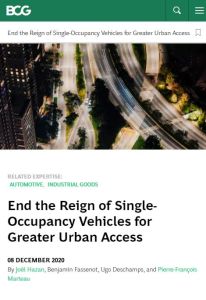
End the Reign of Single-Occupancy Vehicles for Greater Urban Access
Read or listen offline
Recommendation
Do the richest people in your city take public transport, and can the poorest people in your city use public transport to reach better-paying jobs? If your answer to these two questions is no, you’re likely living in an area with poor urban mobility, or perhaps it’s an area where people mainly use single-occupancy vehicles to get around. The fruits of such a transportation system are pollution, inequality, congestion, limited mobility and an underperforming economy. Do you know what your public authorities and private firms can do to improve the situation? The Boston Consulting Group outline solutions in this special report.
Take-Aways
About the Authors
Joël Hazan, Benjamin Fassenot, Pierre-François Marteau and Ugo Deschamps are professionals with the Boston Consulting Group.



















Comment on this summary or 开始讨论